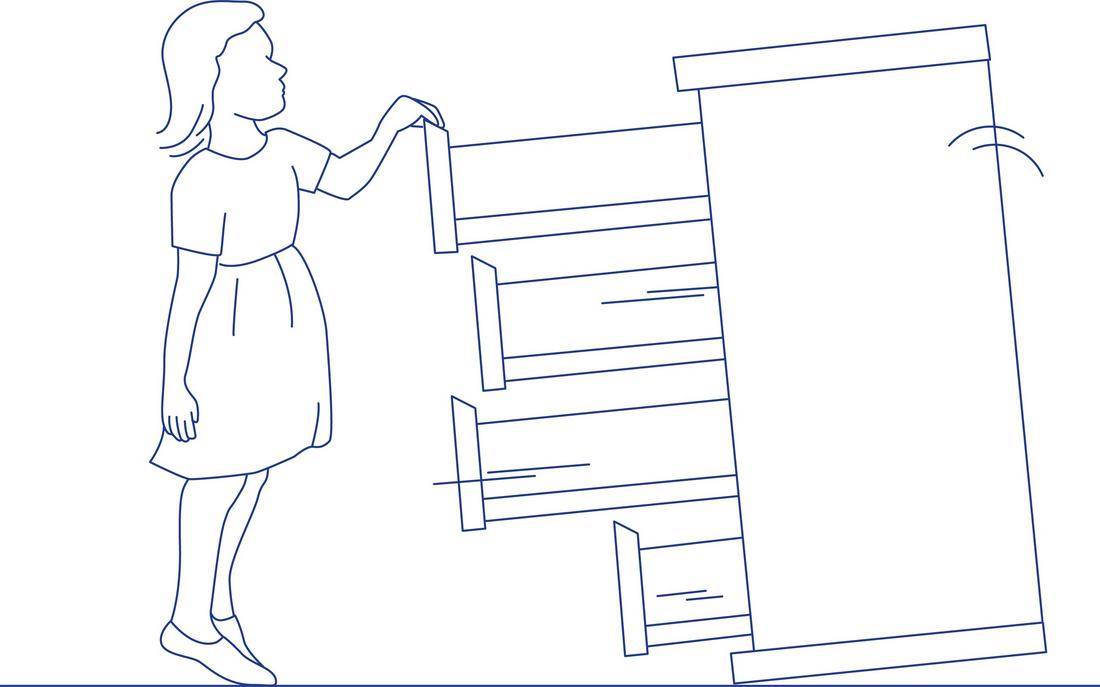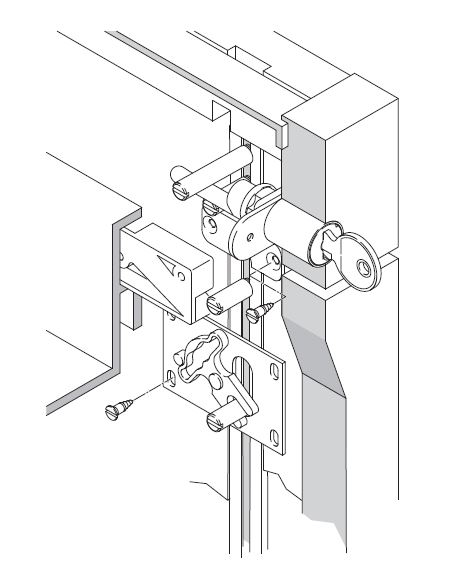Why Anti-Tilt is an essential feature for filing cabinets
August 28th 2025

Filing cabinets are workhorses in any office, providing essential storage for documents and supplies. However, a heavily loaded filing cabinet can quickly become a safety hazard if not properly secured. The risk of a cabinet tipping over when multiple drawers are opened simultaneously is a serious concern, leading to potential injuries and damage to contents. This is where anti-tilt systems come into play, offering a simple yet incredibly effective solution to enhance safety.
The Hidden Danger of Overloaded Cabinets
Imagine a tall filing cabinet, packed to the brim with paper. If a user were to open the top two or three drawers at once, the centre of gravity of the cabinet would shift dangerously forward. The leverage created by the extended drawers, combined with the weight of their contents, can easily cause the entire unit to become unstable and tip over. This isn't just a theoretical risk; it's a very real workplace hazard that safety regulations often address.
How Anti-Tilt Systems Work: A Simple Yet Ingenious Mechanism
The core principle behind an anti-tilt system is surprisingly simple: it prevents more than one drawer from being opened at any given time. This ingenious mechanism ensures that the cabinet's weight distribution remains stable, significantly reducing the risk of tipping.
While the exact mechanics can vary slightly between manufacturers, most anti-tilt systems operate on a similar principle:
- Interlocking Bar: A vertical locking bar or rod is typically integrated into the cabinet's frame, often running along the side or rear.
- Drawer Interaction: Each drawer has a mechanism (e.g. a peg, pin, or catch plate) that interacts with this vertical bar.
- Preventative Opening: When one drawer is pulled open, it engages with the locking bar, causing the bar to move (either up or down, depending on the design). This movement simultaneously activates a locking mechanism on all other drawers, preventing them from being opened.
- Re-engagement on Closure: Only when the open drawer is fully closed does the locking bar return to its neutral position, releasing the other drawers and allowing them to be opened.
This ensures that regardless of how many drawers are attempted to be opened, only one will ever extend, maintaining the cabinet's stability.

The Lehmann SVS3 Anti-Tilt Locking System: A Benchmark for Safety
Lehmann, a renowned name in locking solutions, offers sophisticated anti-tilt systems like the SVS3 Interlock System. The SVS3 system is specifically designed to minimize the risk of furniture tipping over by preventing the simultaneous opening of multiple drawers. It works slightly differently to the standard Anit Tilt system. When closed a peg on each drawer engages with the black activator on the bar. When the drawer is opened the activator rotates and moves spacers within the bar which prevent other drawers from being opened.



Key benefits and features of the Lehmann SVS3 system include:
- Integrated Safety: The SVS3 is a fully configured, one-piece interlock bar designed for easy installation, making it a seamless addition to filing cabinets and pedestals.
- Adaptability: The SVS system is highly adaptable, fitting various furniture designs, drawer configurations (e.g. two, three, four or more drawers), and drawer slides. It can even be installed on the left, right, both sides, or at the back for enhanced safety.
- Central Locking Compatibility: Beyond just preventing tilting, the SVS3 can be integrated with central locking systems (mechanical cylinder locks, dial locks, or even electronic solutions), allowing for all drawers to be locked with a single action. This adds an extra layer of security for confidential documents or valuables.
- Durability and Reliability: Built to Lehmann's high standards, these systems are designed for long-term, reliable performance in demanding office environments.
- Workplace Health & Safety Compliance: Anti-tilt systems are often a requirement for workplace health and safety regulations, ensuring a safer environment for employees.
Why Anti-Tilt is a Non-Negotiable Feature
In modern office environments, especially with heavier, larger filing cabinets, an anti-tilt system is not merely an optional extra – it's a crucial safety feature. It protects individuals from injury, prevents damage to valuable contents, and ensures compliance with safety standards. When choosing new filing cabinets or upgrading existing ones, always prioritise those equipped with a reliable anti-tilt mechanism like the Lehmann SVS3, as supplied by Unico Components. It's a small investment that offers priceless peace of mind.
The SVS3 system is generally suited to larger projects as the bars require minimum quantities for manufacture. The Standard Anti-Tilt system is more suited to smaller standalone projects.
For more information on the SVS3 or the Standard Anti Tilt System contact us now.